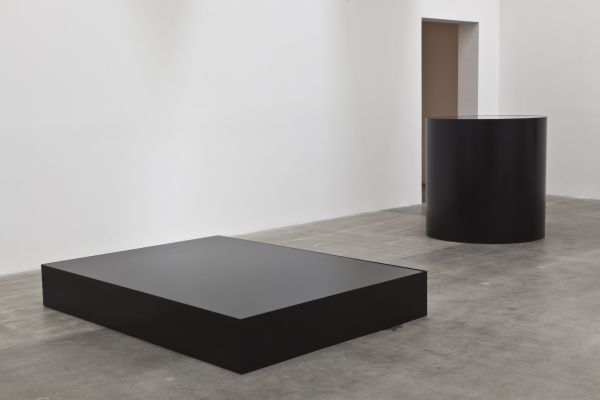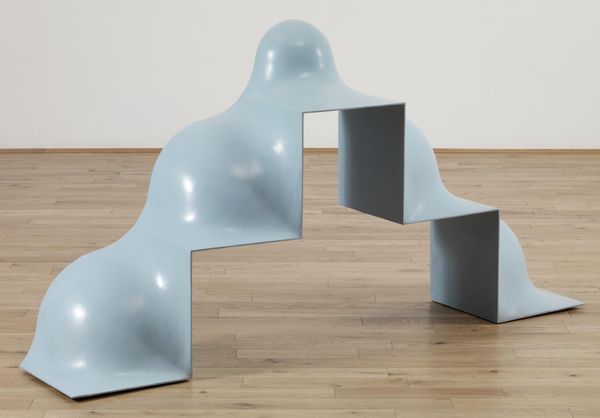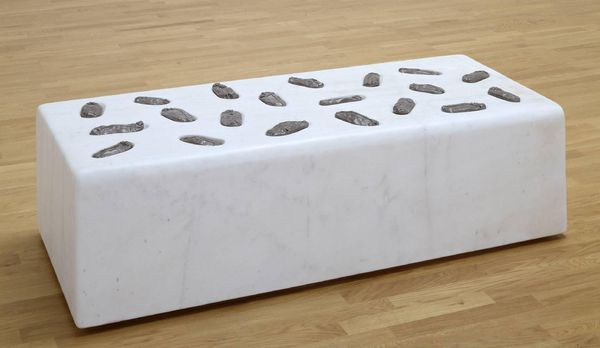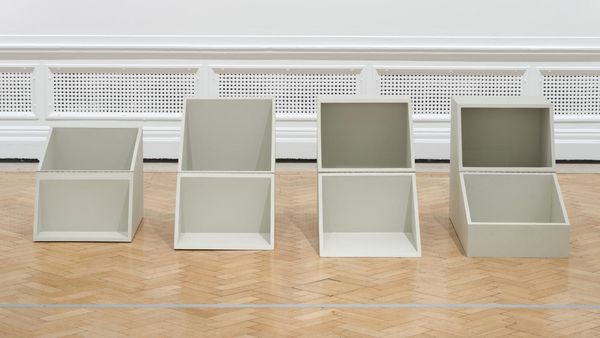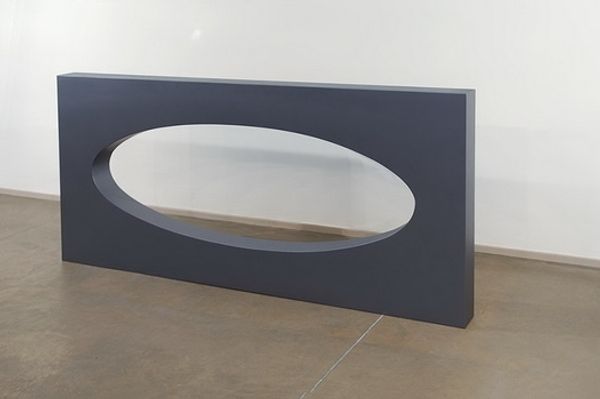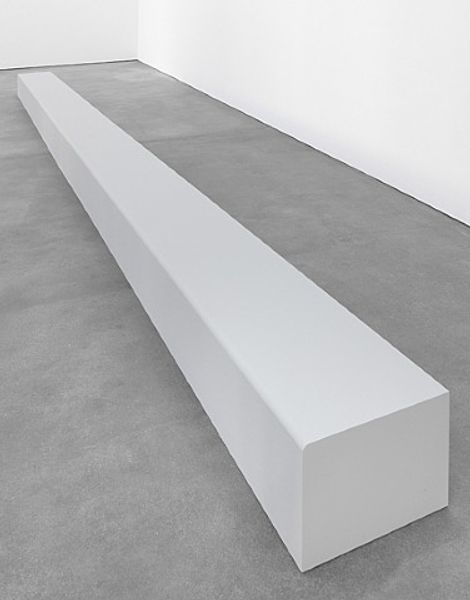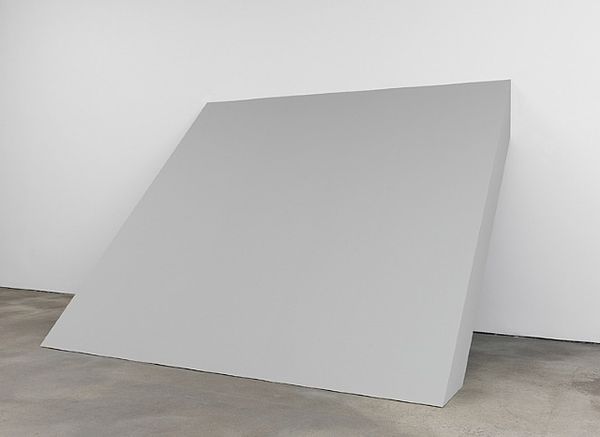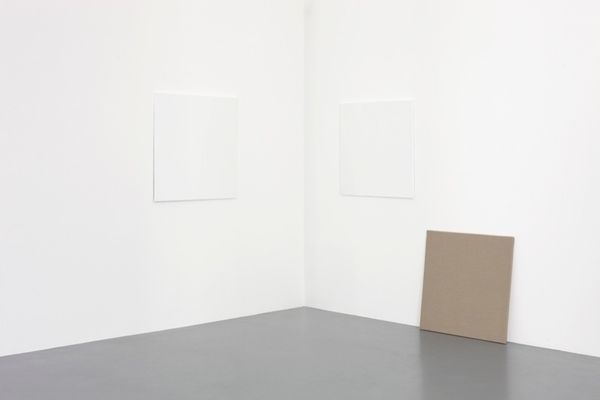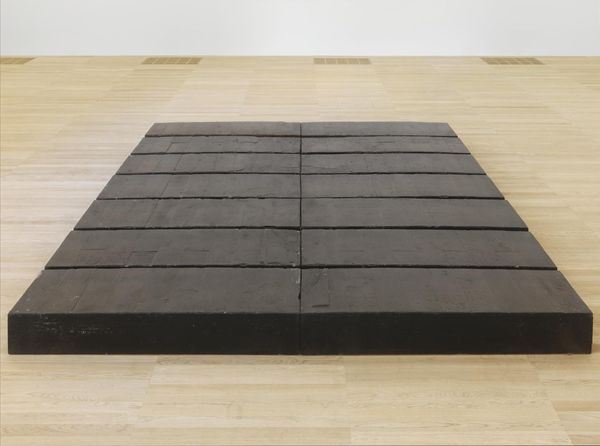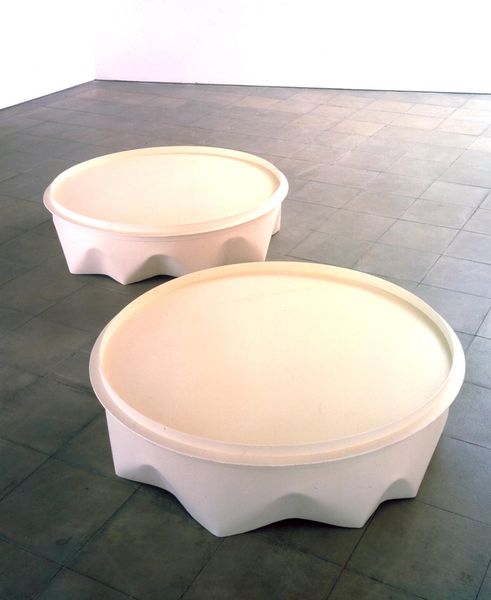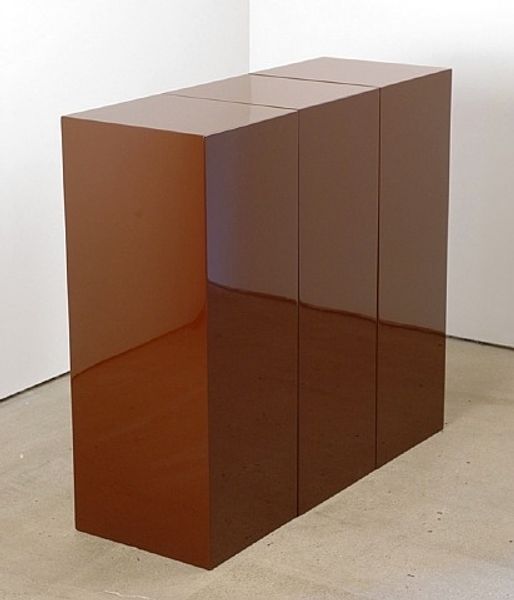
sculpture, installation-art, wood
#
conceptual-art
#
minimalism
#
form
#
geometric
#
sculpture
#
installation-art
#
line
#
wood
#
modernism
#
building
Copyright: Pedro Cabrita Reis,Fair Use
Curator: Here we have "Limbo," a 1990 installation by the Portuguese artist Pedro Cabrita Reis, currently held at the Tate Modern. Editor: It’s strikingly austere. My initial impression is of an architectural fragment—stripped bare, bleached, like the ghost of a structure. Curator: Yes, that austerity is key. The composition emphasizes line and geometric form, in accordance with minimalist aesthetics. Observe how the modules intersect and extend, seemingly arbitrarily, across the gallery space. The artist used humble materials to produce it: primarily wood and paint. Editor: The use of stark white definitely enhances the dreamlike atmosphere. It feels incomplete. The cylinder seems like it should function as part of something else, perhaps a well or the foundation of a much larger building. I am immediately drawn to thinking about circles. Curator: The title itself—"Limbo"—invites readings centered on transitional spaces. We could interpret the sculpture as a physical manifestation of an in-between state, evoking feelings of disorientation. Look closely at how the form leads your eye: the sharp angle diverts it, preventing closure. Editor: The ambiguity resonates strongly. Considering it was created during a time of considerable sociopolitical upheaval and a shifting geopolitical landscape, it certainly begs the question of how symbolic Reis intends it to be of a global experience or expectation. What symbols does Reis include for a deeper consideration, especially during his particular cultural context? Curator: That’s a compelling perspective. To read it against that historical context opens many possibilities. One could argue Reis's "Limbo" avoids overt symbolism in favor of eliciting a purely aesthetic response. The point, perhaps, is the indeterminate nature, the very lack of a clear narrative. Editor: And perhaps there's an argument for this representing that universal human experience—an expression of a moment that we each connect with and comprehend based on our specific realities. What’s crucial to note is the conversation it invokes as a physical symbol in our shared reality. Curator: A fitting point to ponder when regarding Cabrita Reis’ work. It creates an intriguing visual and conceptual encounter that can prompt the exploration of one's understanding of self. Editor: Indeed. Thank you.
Comments
No comments
Be the first to comment and join the conversation on the ultimate creative platform.
